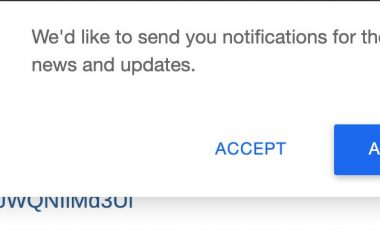Within the realm of SEO, the fundamental understanding is that leaving best practices neglected means missing out on traffic that could potentially have been caught by better signalling. Among these practices, images often come unoptimised by those new to the field of SEO – and this is often by virtue of underestimating their significance, lack of understanding as to how optimisation can be approached, or simply not knowing of its possibility. SEO Sydney is here to guide you on the fundamentals of alt text, and the reasons for its significance.
What is Alt Text? SEO Sydney Explains
Given that an image can’t be ‘read’ in the same way that a body of text can, alt text (alternative text) essentially refers to a description attributed to an image, able to convey the relevant information on the image’s content or association with the piece’s subject matter. Mostly outside of the viewable webpage, this text exists within its HTML source code, as a means for the search engine to interpret and characterise its meaning for indexation.
Outside of SEO, the presence of an image text alt text is functional – it’s a means for content to become more accessible, better accommodating users with a need for text-to-speech programs or other assistant tools. Where images fail to load, alt text exists as a means for users to understand the context of what they’re looking at, links that they point to and more.
Why is Image Alt Text Important for SEO?
Established in Web 1.0 with a pure utility focus, the importance of alt text was primarily to care for the equality of user experience, ensuring that all users could benefit from the information of a webpage as much as possible. Since the evolution of Google tools and products for webmasters, though, this has been quantified into a measurable SEO signal – with a well-composed alt text signalling high quality content, and therefore stronger viability as a search result.
Including Keywords in Alt Text
Being a measurable signal then, in the form of HTML text that GoogleBot is able to read, alt text also plays a vital role in incorporating target keywords into images. In the same way that including keywords into your copy is a means of attributing relevance of content to users you want to become discoverable for, adding keywords into your alt text functions in a similar way.
Implementation of keywords into your alt text depends on the quality of your alt text composition, with this being said. To rank well, at the end of the day, the content of your alt text needs to provide context that is worthy of being read and indexed – making the inclusion of keywords that much more necessary of a considered, curated process.
At a given point in time, anywhere between 10-20% of Google SERP traffic is likely to include images. This shows how sizable image traffic is, and how image alt text can affect your SEO.
Common mistakes when Writing Alt Text:
Overstuffing of Keywords
Don’t stuff your sentences with keywords – playing on our above point of precision and value being the primary criteria, you should look to balance being as concise and useful as possible. Jam-packing keywords prevents one from understanding the correlation of the image with other parts of the webpage, making it hard for the image to be found and ranked.
Example of bad alt text: Beautiful landscape nature scenery mountains trees forest sky clouds sunset sunrise outdoor adventure hiking travel vacation panoramic view scenic background wallpaper environment eco tourism summer fall winter spring
A better alt text: Mountain landscape with trees and dramatic sky during sunrise or sunset.
Although the common conception is that composition length should be placed at a 16 word limit – the fundamental criteria should always be on the appropriate quality and use for the user, while keeping precision as a guideline to curb overt lengths.
Lack of Tailored Language
Blandly labelling an image as ‘picture of…’ or ‘image of…’ does nothing for users. If we were to imagine how this would apply to a user with assistive tech (as Google does for SEO purposes) – how would this description add anything to what someone is already reading? It provides no context on the surrounding info, why it’s included, and what value it adds to the content’s copy. Instead, directly write a description that provides insight into the world or peripheral information of concepts / topics being explored.
Example of a bad alt text: a picture of a car
A better and specific alt text: Our family’s black sedan parked in a garage.
This helps search engines understand what the image is about, contributing to better SEO.
Use of Decorative Images
The goal of an alt text is to give information about the image. Decorative images that are used as part of a site’s design, are only there to increase the surface area of links, or otherwise are made redundant by surrounding text can be pointless. It is best to avoid them.
The need for image alt text can not be underestimated when referring to search engine optimisation. Throughout your content review, it is evident that alt text contributes effectively to the site’s accessibility for all users and also the improvement of the SEO of the page.
Key Takeaways – Optimise With SEO Sydney
At SEO Sydney, we recognise the power of alt text and its impact on optimising website content for search engines. By providing comprehensive alt-text descriptions that incorporate target keywords effectively, businesses can significantly improve their visibility and relevance in search engine results.
Convinced on the need to optimise your images? Contact us today! We exist to make your webpage rank high on search engines and bring in more organic traffic for you through SEO web design, copywriting and content writing and more.


